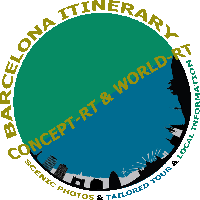Datong with its Yungang Grottoes of China
Taking a fast train at the Pingyao railway station to go to Datong (大同), the trip lasts about 7 hours. As for the other cities, we bought our tickets online and we printed them out at the station presenting our passport. The difference between a fast train (250km/h) and a high speed train (350km/h) is the maximum speed. The hotel 7 Days Inn (zhanbei street) is just at the right side of the station, it was perfect because we arrived at the night time. The room is correct and it is quite quiet in spite that it is located next to the trains. We booked for 2 nights then we booked 2 nights at the Hongqi Grand Hotel (11 zhanqian street). This hotel is better and it is just in front of the first one. |
|
Our first day was to visit the old walled city, the original city has been destroyed and the government is currently reconstructing it again including the wall, personally, it is not worth, may be in the future once finished.

We passed most of our time at the south side, between the Drum tower and the south gate where there are the Shanhua temple, the nine dragon wall and the Huayan temple, the south wall can be visited too. To go there, we took the bus 4 situated at few meters from the hotel, just in front of the post office building then, at the ninth stop, we get off. From here, we walked but if you don’t want to use your feet, at the other side of the street, there is a bus stop and from there, take the bus 27.
The Yungang Grottoes (雲崗石窟) are very special and very impressive, not all of them but most of them. To go there, we took the special double deck bus, parked in front of the ICBC bank building, just at few steps from the post office building, in front of the bus 4. The bus runs from 7h to 18h and it brought us directly to the grottoes for only 1rmb.
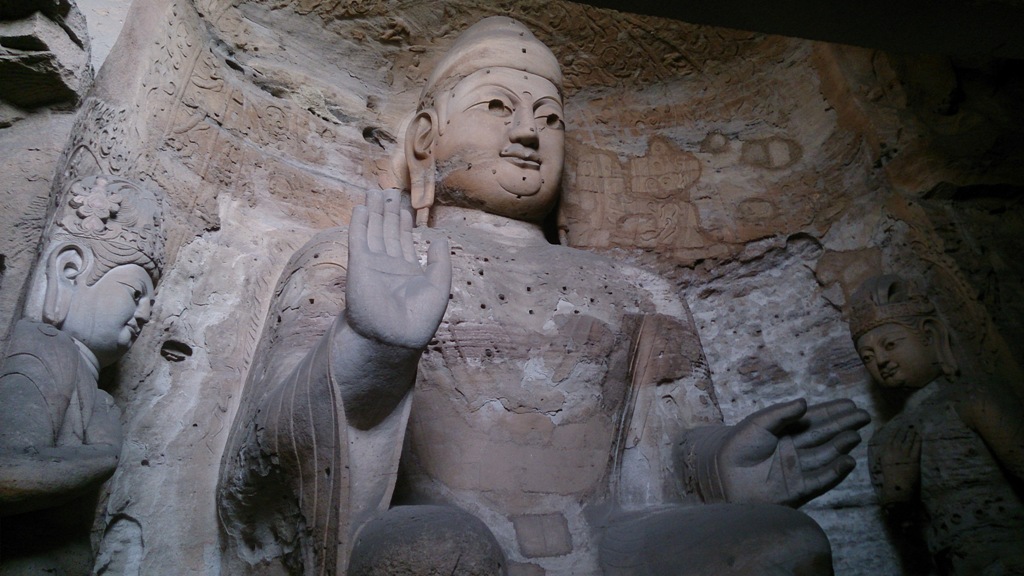 |
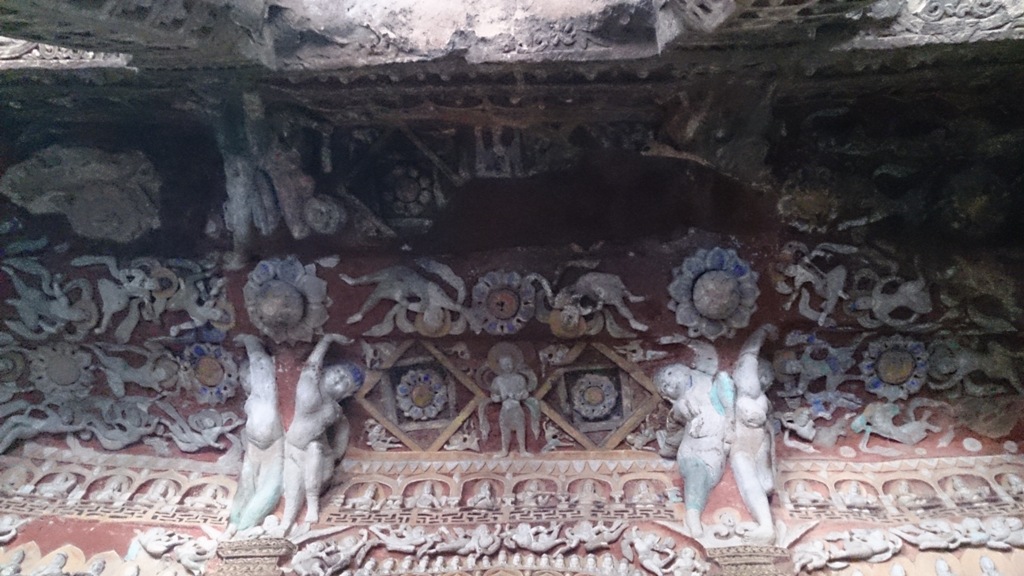 |
They were carved and painted by monks during 60 years from 460 until 525, the first ones were done by the monk Tan Yao at the period that the Buddhism flourished, in fact, even after 525, some monks continued to carve the stone. The legacy is what we can see right now, the most impressive are the ones inside the temple and of course, the giant Buddha.
But before to reach them, we crossed different new areas including a lake where people can do a boat tour and a huge temple with different main pavilions with Buddha. Those areas, we passed quickly since, historically, there is nothing to learn. It is like a kind of theme park but without carousels.
When you reach the bridge with the lake, just at the left side, there are some mini cars to bring you directly to the grottoes, exactly at the giant Buddha statue. It is a good option if you don’t want to walk, we didn’t do it because there were none when we arrived but we did it for the way back because we ended near to the giant statue.
In fact, if you take the mini car, you will start by the end of the grottoes, if not, like us, our starting point was at the beginning after crossing the big temple. And before to leave, don’t forget to discover the museum, it is quite interesting, you can’t miss it because it is situated at the end.

The Hanging Monastery (懸空寺), also known as Xuankong Temple, is a little complicated to reach. We took the bus 70 in front of the post office building, we get off when it arrived to the south door of the walled city (not the main but the secondary one), to be sure, we asked the driver. Once off the bus, we went left (the wall is on our back meaning that if you are in front of the wall, go right) toward the outskirt bus station. Here we bought a ticket for 30rmb to Hunyuan (浑源). When we arrived to the Hunyuan bus station, the driver asked us to get off and to take a taxi that brought us to the temple. The taxi is free since it is included in the price of the bus.
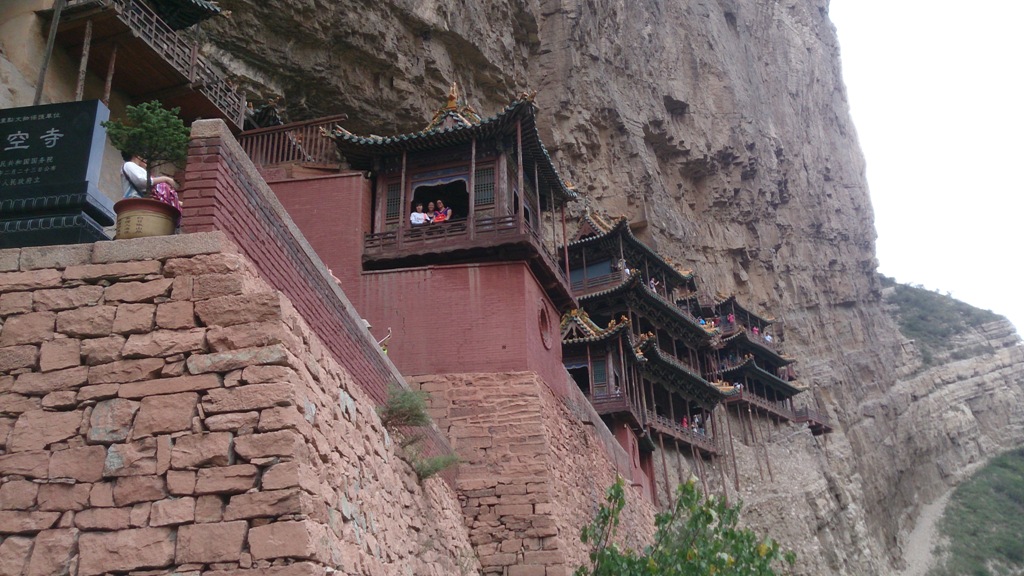 |
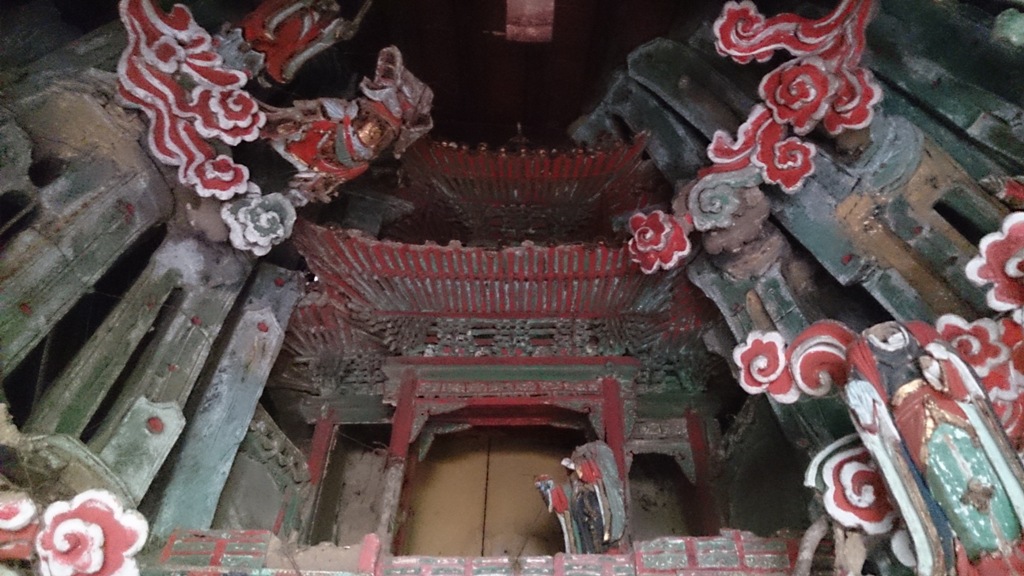 |
The monastery is hung on the cliff of the Mountain Hengshan since 491, during those past years, it has been repaired and maintained, the reason why it still stands up. I was more impressed by what I read than by what I saw. The architecture is quite interesting combining three Chinese traditional religions: Buddhism, Taoism, and Confucianism and the design of some rooms make it worth to discover the place.
Now to go back to Datong, there was no easy way. First we wanted to go back to the Hunyuan bus station (浑源公車站) by taxi but a Chinese guy with a hat prevented us telling to the taxi drivers to bring us directly to Datong and he didn’t stop saying us that there are no buses at the station.

There is no way to ignore him and when we tried to deal directly with a taxi or another, the driver went to talk to this guy so we have 2 choices, take the taxi to Datong or to walk to the bus station. After negotiating the price, we accepted the taxi for 50rmb per person. Of course, in the taxi, we are not alone, there were 2 persons more.
Our next train brought us back to Beijing, we still had 3 days left before to go back to Barcelona so Peking with its National Museum of China was welcomed us.

